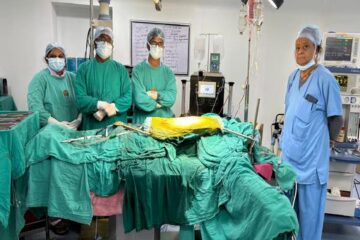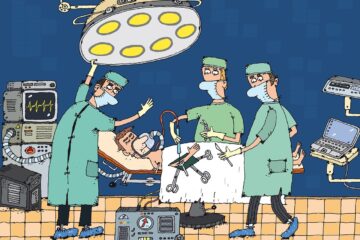Breast cancer is one of the most common cancers affecting individuals worldwide, but understanding it fully can help demystify the condition and provide support to those affected. This blog aims to cover essential aspects of breast cancer, including its types, risk factors, symptoms, diagnosis, treatment options, and preventive measures.
What is Breast Cancer?
Breast cancer occurs when cells in the breast tissue begin to grow uncontrollably, forming a tumor. This malignancy can start in various parts of the breast, including the lobules (milk-producing glands), ducts (milk-carrying tubes), or the connective tissue. While breast cancer predominantly affects women, it can also occur in men, though it is much rarer.
Types of Breast Cancer
Breast cancer is not a single disease but a term that encompasses several types, including:
- Invasive Ductal Carcinoma (IDC): The most common type, IDC starts in the milk ducts and spreads to nearby tissue.
- Invasive Lobular Carcinoma (ILC): This type begins in the lobules and can spread to nearby tissues.
- Ductal Carcinoma In Situ (DCIS): A non-invasive cancer where abnormal cells are found in the ducts but haven’t spread to surrounding tissue.
- Lobular Carcinoma In Situ (LCIS): Often considered a marker for an increased risk of developing breast cancer, it starts in the lobules but does not invade surrounding tissue.
- Triple-Negative Breast Cancer: Lacks three common receptors known to fuel most breast cancer growth, making it more challenging to treat.
- HER2-Positive Breast Cancer: Characterized by the overexpression of the HER2 protein, which promotes the growth of cancer cells.
Risk Factors
While breast cancer can affect anyone, certain factors can increase the risk, including:
- Genetics: Mutations in genes like BRCA1 and BRCA2 significantly increase the risk of breast cancer.
- Family History: Having a close relative with breast cancer can increase your risk.
- Age: The risk increases with age, especially after 55.
- Gender: Women are at a much higher risk than men.
- Hormonal Factors: Early menstruation, late menopause, and hormone replacement therapy can impact risk.
- Lifestyle Factors: Alcohol consumption, obesity, and lack of physical activity have been linked to higher risks.
Symptoms
Breast cancer symptoms can vary widely but commonly include:
- Lumps or Masses: A hard, painless lump or mass in the breast or underarm area.
- Changes in Breast Shape or Size: Swelling or changes in contour.
- Nipple Discharge: Fluid that may be bloody or clear.
- Skin Changes: Redness, dimpling, or puckering of the breast skin.
- Pain: Persistent pain or tenderness in the breast or nipple.
Diagnosis
Early detection of breast cancer increases the effectiveness of treatment. Diagnostic methods include:
- Mammography: An X-ray of the breast to detect abnormalities.
- Ultrasound: Uses sound waves to create images of breast tissue.
- Biopsy: Removing a small sample of breast tissue for examination.
- MRI: Provides detailed images and is often used for high-risk patients or to assess the extent of cancer.
Treatment Options
Treatment plans vary based on the type, stage, and genetic factors of the cancer. Common treatments include:
- Surgery: Options include lumpectomy (removal of the tumor) or mastectomy (removal of one or both breasts).
- Radiation Therapy: Uses high-energy rays to target and kill cancer cells.
- Chemotherapy: Involves drugs that kill cancer cells or stop them from growing.
- Hormone Therapy: For cancers that are hormone receptor-positive, this treatment blocks hormones like estrogen.
- Targeted Therapy: Focuses on specific molecules involved in cancer growth, such as HER2-targeted drugs.
Preventive Measures
While not all breast cancer cases can be prevented, certain steps can reduce risk:
- Regular Screenings: Regular mammograms and self-exams can help detect cancer early.
- Healthy Lifestyle: Maintaining a balanced diet, regular exercise, and avoiding excessive alcohol consumption.
- Genetic Testing: For those with a family history, genetic testing can provide information on your risk and guide preventive measures.
- Medications and Surgery: For high-risk individuals, options such as preventive mastectomy or medication can be considered.
Supporting Breast Cancer Awareness
Breast cancer awareness and research are crucial in fighting the disease. Participate in awareness campaigns, fundraisers, and support organizations dedicated to breast cancer research and patient support. Education and early detection are key in improving survival rates and advancing treatment options.
Conclusion
Breast cancer is a complex and multifaceted disease that affects millions globally. By understanding its types, risk factors, symptoms, and treatment options, individuals can take proactive steps in managing their health or supporting loved ones affected by breast cancer. Early detection, ongoing research, and supportive care are essential in the fight against this disease.
Remember, if you have concerns about breast cancer, consult with a healthcare professional for personalized advice and support.




